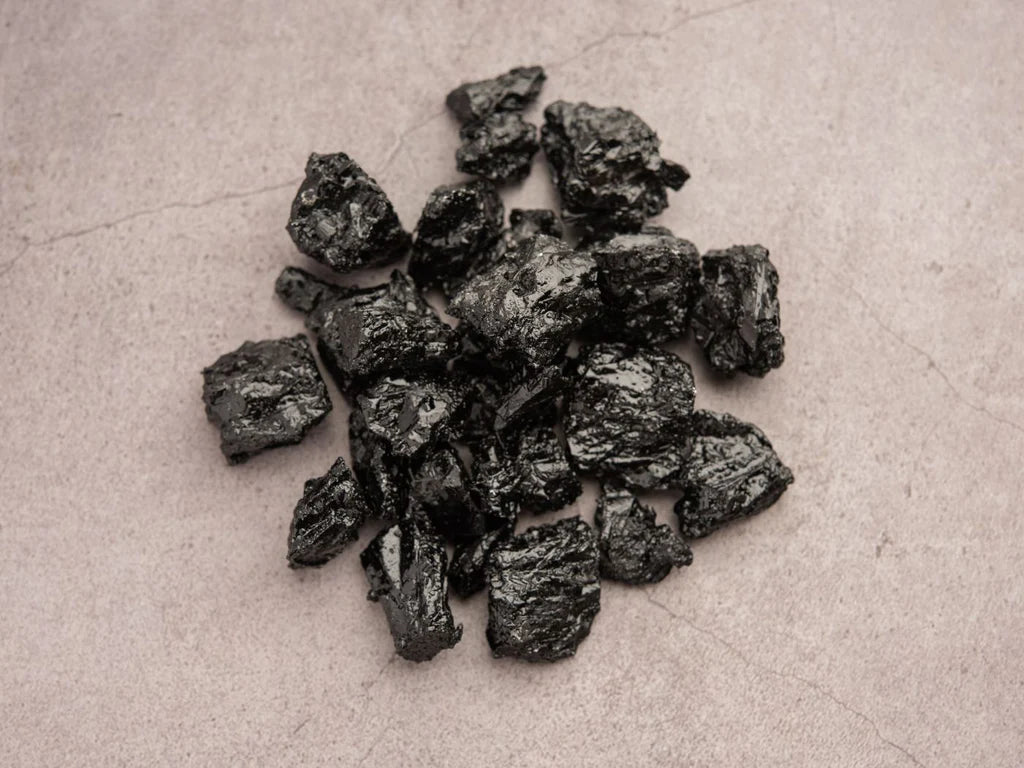
Exploring Shilajit: Its Rich History and Cultural Significance
Abdullaah KhanShare
Introduction
In the world of natural health, Shilajit has gained increasing attention in recent years for its purported health benefits. This sticky, tar-like substance has been used for centuries in Ayurvedic medicine, and has even been referred to as the "destroyer of weakness" due to its reputation as a powerful rejuvenator. In this article, we will explore the history and cultural significance of Shilajit, as well as its traditional uses and potential health benefits.
The History of Shilajit
Shilajit has a long and fascinating history, with mentions of its use dating back over 3,000 years. In ancient Sanskrit texts, it was referred to as "the elixir of life" and was believed to have the ability to cure any ailment. It was also used as an aphrodisiac and to improve cognitive function. In the 7th century, the famous Chinese doctor Li Shi-Zhen included Shilajit in his medical texts, praising its ability to "invigorate the body and prolong life."
What is Shilajit and How is it Made?
Shilajit is a blackish-brown resinous substance that is found in high altitude mountain ranges such as the Himalayas. It is formed from the decomposition of plant material over thousands of years, which is then mixed with minerals and other organic matter. The resin is collected from the rocks and purified to create the final product.
Traditional Uses of Shilajit in Ayurvedic Medicine
In Ayurvedic medicine, Shilajit is believed to have a range of health benefits, including improving brain function, reducing inflammation, boosting energy, and promoting longevity. It is often used as a tonic for overall health and vitality, and is believed to help balance the body's energy levels and promote healing.
Health Benefits of Shilajit
While scientific research on Shilajit is still limited, there is evidence to suggest that it may have a range of health benefits. One study published in the Journal of Ethnopharmacology found that Shilajit has antioxidant properties and may help protect against cellular damage. Another study published in the Journal of Medicinal Food found that Shilajit may help reduce inflammation and improve heart health.
Shilajit for Athletes and The Gym
Shilajit is also gaining popularity among athletes and fitness enthusiasts due to its potential to improve physical performance. It has been shown to increase levels of ATP, a molecule that provides energy to the muscles, and may also help reduce muscle damage and soreness after exercise.
Shilajit also contains around 84 minerals which makes it an ideal supplement to improve muscle tissue that is dependent on minerals for its structure, as well as for the processes related to muscle movement.
Shilajit's Cultural Significance
In addition to its medicinal uses, Shilajit holds cultural significance in many regions where it is found. In India, it is considered a sacred substance and is often used in religious ceremonies. In Nepal, it is known as "salampanja" and is believed to have spiritual and healing properties. And in Russia, it is known as "Mumiyo" and is used in traditional medicine to treat a variety of ailments.
Considerations Before Trying Shilajit
While Shilajit is generally considered safe, it is important to talk to your healthcare provider before trying it, especially if you are pregnant or breastfeeding. It is also important to source Shilajit from a reputable supplier, as there have been reports of counterfeit products on the market, we recommend Sweet Health's Organic Shilajit Resin 😉
Conclusion
Shilajit has a rich history and cultural significance, and is believed to have a range of potential health benefits. While more research is needed to fully understand its effects, many people swear by its ability to improve energy, vitality, and overall health. If you're considering trying Shilajit, be sure to talk to your healthcare provider and do your research to find a high-quality product from a reputable supplier.
While Shilajit may not be a magic cure-all, it's been used for centuries in Ayurvedic medicine and has shown promise in preliminary studies. As with any supplement or natural remedy, it's important to approach it with an open mind and a healthy dose of skepticism, and to make informed decisions based on the available research and expert advice.
References:
-
Agarwal SP, Khanna R, Karmarkar R, Anwer MK, Khar RK. Shilajit: a review. Phytotherapy Research. 2007;21(5):401-405. doi:10.1002/ptr.2100
-
Stohs SJ, Ray SD. A Review and Evaluation of the Efficacy and Safety of Shilajit (Mumiyo). Phytotherapy Research. 2019;33(2):308-318. doi:10.1002/ptr.6236
-
Schliebs R, Liebmann A, Bhattacharya SK, et al. Systemic Administration of Defined Extracts from Withania somnifera (Indian Ginseng) and Shilajit Differentially Affects Cholinergic but not Glutamatergic and GABAergic Markers in Rat Brain. Neurochemical Research. 1997;22(12):1493-1500. doi:10.1023/A:1027343520809
-
Bhattacharyya S, Pal D, Gupta AK, Ganguly P, Majumder UK, Ghosal S. Beneficial Effect of Processed Shilajit on Swimming Exercise Induced Impaired Energy Status of Mice. Pharmacologyonline. 2009;1:817-825.
-
Meena H, Pandey HK, Pandey P, Arya MC, Ahmad MK, Mahdi AA. Shilajit: An Ancient Panacea. International Journal of Alzheimer's Disease. 2012;2012:674142. doi:10.1155/2012/674142
-
Ghosal S. Shilajit in Perspective. Oxford, UK: Narosa Publishing House; 2006.








